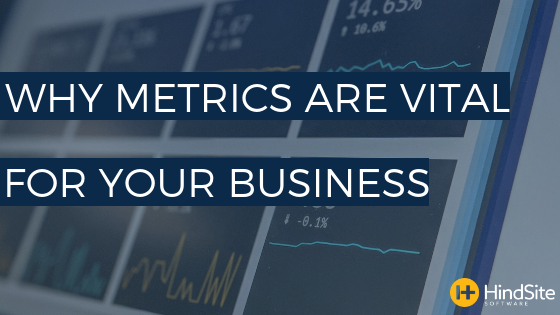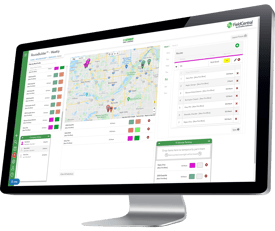
I was just talking with my boss about the reasons why measurement and tracking is so important to, really, any business. Restaurants, software companies like us, lawn maintenance, e-commerce websites, irrigation businesses, anyone who is seriously interested in growing. The information that you gather now form the decisions you make a year from now, three years and even ten years down the road.
Think about your green industry business like an airplane and the information that you gather is like the instrument panel. Your small airplane might start out without an instrument panel. Eventually you add a compass, and then you add a way to gauge your altitude, and so on and so forth. Pretty soon, you’re flying in a machine that can keep course with very little help of a pilot. Wouldn’t you feel better flying in a plane with radar and instruments that can show you where you are and where you’re going?
So you aren’t keeping a machine up in the air, even if your office manager seems like an air traffic controller at times. But why fly blind? Why not use information that you can easily gain to your advantage.
Time Management
Tracking your current business activities will give you a good overall picture of your time spent on each individual activity. You’ll see where your crews are spending the most time. If a certain job takes longer than you previously expected, you can change the way you estimate your field services.
Accurate Payment
Tracking all your business activities will ensure accurate payment. Think of a fuel gauge and the GPS in a plane’s instrument panel. You know your cost, you know how far you’ve traveled. This is the similar type of information you can garnish from tracking everything.
Employees: You’ll know exactly what your employees should be earning based on their activity. What are they doing out in the field that is saving your business money or time? You’ll be able to base your wages off of historical information.
You (Owner): Having information on hand gives you justification for your prices. If a customer asks why you charge as much as you charge, you have data that backs you up. You’ll know if you’re charging the right amount and feel good about doing so. There isn’t the “Well the other guy charges less, why don’t you?” question that goes unanswered.
Profitability
You’ll know exactly what you’re making and spending. Tracking takes the guesswork out of your bottom line. Even if you have a rough idea of how much time you spend on a particular job, if you’re tracking every activity, you get a granular view of what is affecting your bottom line.
Sales
Funnel: The typical sales process is like a funnel. You have prospects at the top of the funnel because there are a lot of them. These are essentially people that have expressed an interest in your business, but who you have not yet estimated the dollar value of the service they would like. These may also be called leads. These folks are typically farthest away from representing revenue in your business. The prospects are what are called your top of funnel leads.
Win Rate: So now that you understand the general fundamentals of a sales pipeline, let’s look at some other numbers. One that can help you better understand the success of your sales rep is their win rate. Win rate is very simple to calculate. Just take the total number of sales won and lost in a particular time period, and divide it by the number of wins. Your formula is simply this:
Wins/(Wins+Losses)
That tells you what percent of estimates you typically win. If you have a number in the single digits, you have problems. You may be priced too high, your sales rep may be ineffective, your value propositions may need work, or any combination of those three things could be causing you to lose a large percentage of the estimates you submit.
Average Days to Close: Average days to close is another great metric that can help you fine-tune your sales forecast. It’s basically a measurement of how long it takes from the creation of a prospect to a decision. So if you create a prospect on June 1 and they tell you they’ve selected you on June 15, it took 15 days.
Decision Making
If you’re a green industry business that offers a wider array of services like mowing, blowing, irrigation, pruning and landscaping, you can use the information you’ve gained to make decisions on those services. Maybe you scale back or even stop offering pruning because you haven’t made enough money on it. Or, you can even decide to become focused on only one service in the future.
Scalability
Information is the key to growing a successful business. In the early stages, data might not seem too important to have on hand. It even might slow you down to set up the infrastructure to start collecting that data. However, when you're looking to take the next step and grow your business, all the information that you collect can - and most likely will - come into play. You will be able to figure out how many employees you'll need to on board and how much you can afford to pay them. The information that you gain from measuring your business activities can also even help you in deciding if you can offer a new service.








